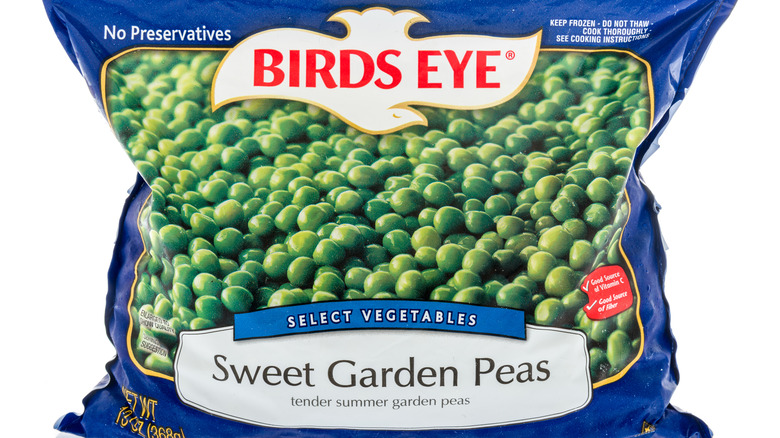This Traditional Preservation Method Inspired The Founder Of Birds Eye
If you've ever browsed the freezer cases at your local supermarket, you've probably noticed one brand that dominates in the frozen fruits and vegetables department: Birds Eye. Established in the 1930s by founder Clarence Birdseye (via Birds Eye), this frozen food megagiant is the No. 1 seller of frozen vegetables in the United States, according to Dun & Bradstreet. Its instantly recognizable deep-blue packages include common veggies such as corn kernels, green beans, peas, broccoli, and many more (via Birds Eye).
When purchasing frozen vegetables, you might not think too much about how the produce got there or even about the technology required to get it out to stores in its perfectly preserved state. Birds Eye uses a technology called flash freezing, which, when it was invented by Clarence Birdseye in the 1920s, represented a huge advance in the industry (via Birds Eye). But as it turns out, this very modern technology was actually inspired by methods of traditional preservation that biologist and eventual inventor Birdseye discovered in his travels around the world (via Birds Eye).
Canadian Inuits inspired frozen vegetable technology
Birds Eye frozen vegetables first went to market in the U.S. in the 1930s, a couple of decades after brand founder Clarence Birdseye returned to the country from Inuit territories in what is now northern Canada (via Birds Eye). A biologist at the time, Birdseye found himself in this cold land in 1910, where he observed the native peoples' traditional method of freezing their stocks of fish. Placing the fish out on the ice where they would also be whipped by the cold air, the Inuit were able to almost instantly "flash freeze" their fish — and Birdseye noticed that those fish still tasted fresh once they were thawed (via Birds Eye).
Upon returning to the U.S. in the 1920s, Birdseye invented and patented his Quick Freeze Machine, using modern technology to mimic the Inuit technique he had witnessed (via Birds Eye). In this machine, vegetables freeze so quickly that "their cell walls are not damaged," according to Birds Eye. "The frozen veggies are nearly identical to fresh in nutrition and taste. Flavor, texture, and color are all preserved." Studies have borne out these observations. For example, frozen produce contains more vitamin C and more soluble fiber than fresh (via Healthline). So go forth and enjoy those frozen fruits and veggies — and thank our neighbors up north for showing us the way.

